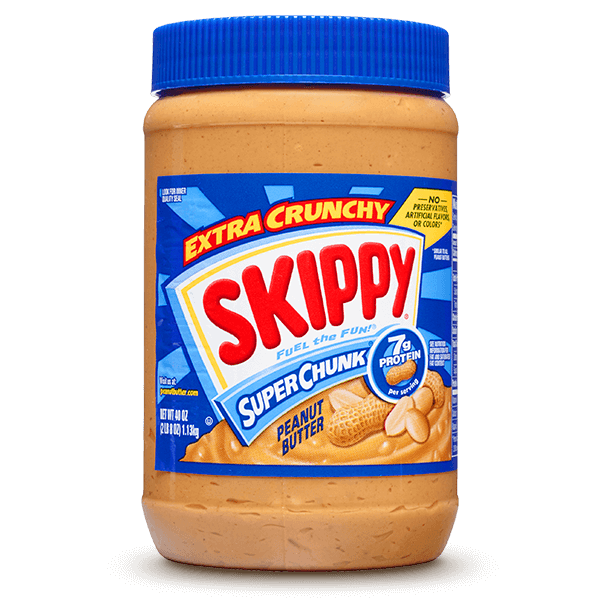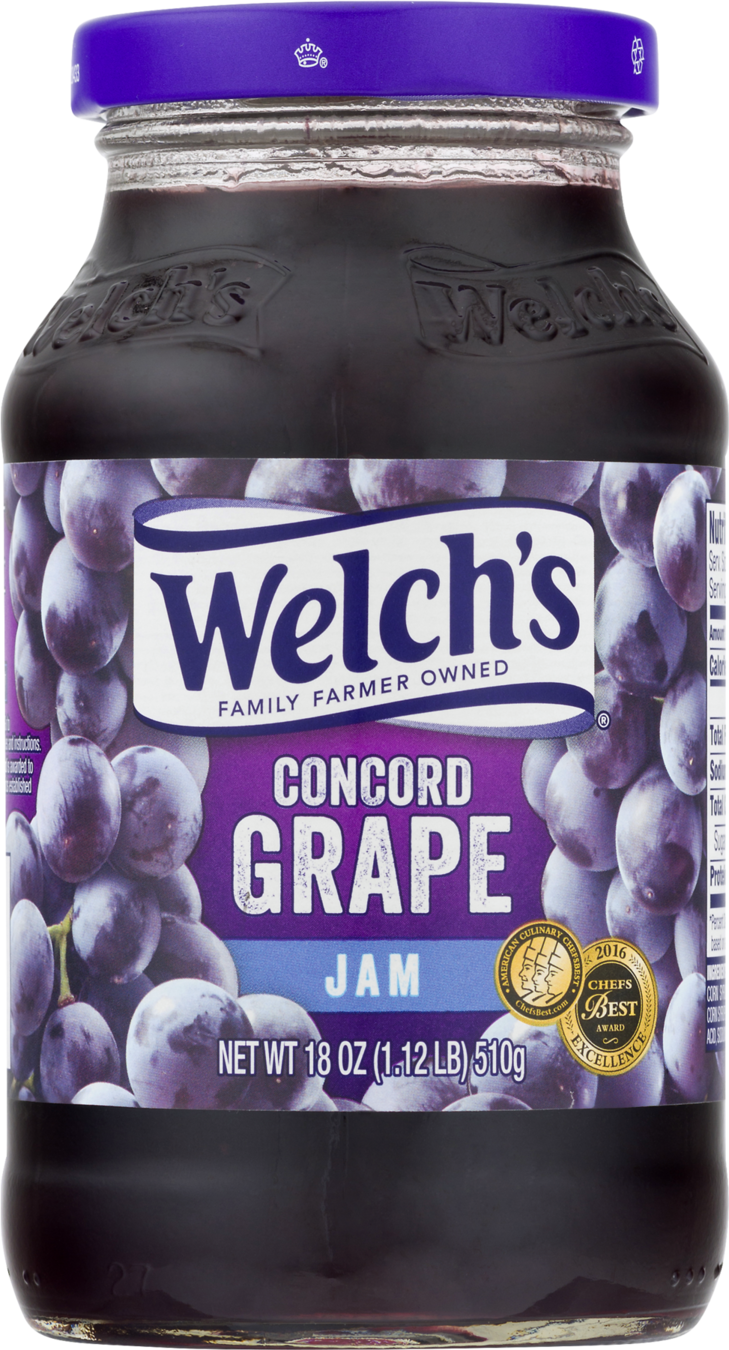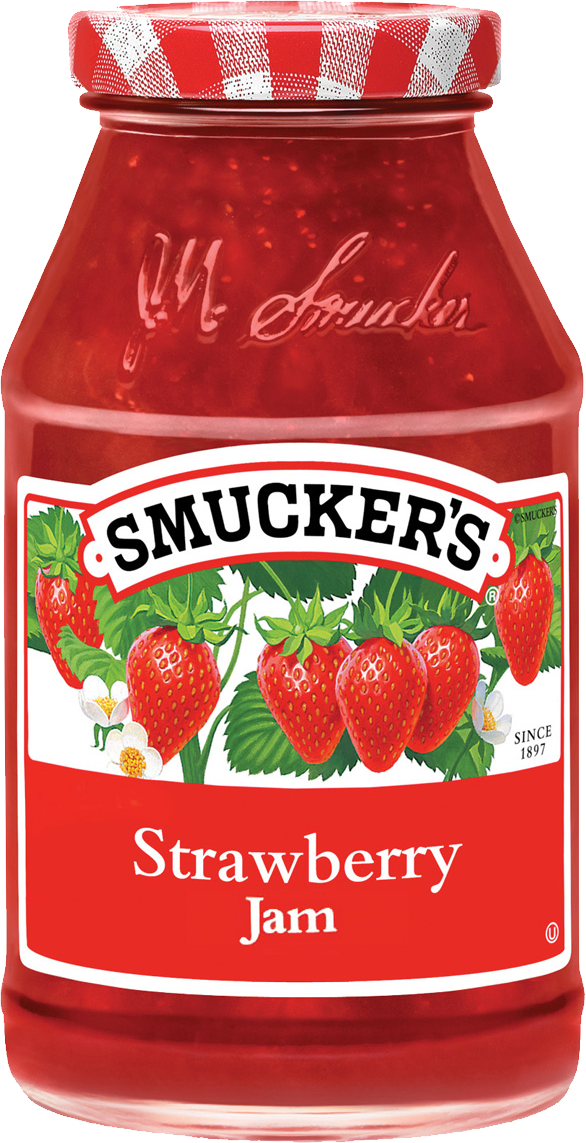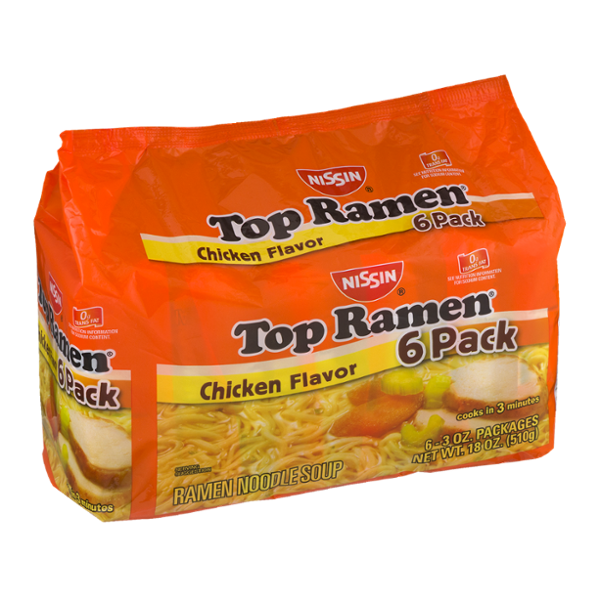Course Retrospective
Christopher Makler
Stanford University Department of Economics
Econ 50
Far out in the uncharted backwaters of the unfashionable end of the western spiral arm of the Galaxy lies a small unregarded yellow sun.

SCIEPRO/GETTY IMAGES
Orbiting this at a distance of roughly ninety-two million miles is an utterly insignificant little blue green planet whose ape-descended life forms are so amazingly primitive that they still think digital watches are a pretty neat idea.
This planet has — or rather had —
a problem, which was this:
😢
most of the people on it were unhappy for pretty much of the time.
Many solutions were proposed
for this problem...

...but most of these were largely concerned with the movements
of small green pieces of paper,
which is odd because on the whole
it wasn't the small green pieces of paper that were unhappy.


Resources
Technology
Stuff
Happiness
🌎
🏭
⌚️
🤓
Part I: The Real Economy
Demand
Supply
Equilibrium
🤩
🏪
⚖
Part II: Little Green
Pieces of Paper
Three Fundamental Tools of Analysis
Optimization
Given a fixed set of circumstances (prices, technology, preferences), how do economic agents (consumers, firms) make choices?
Comparative Statics
How do changes in circumstances (changing prices, shifting technology, preferences, etc.) translate into changes in behavior?
Equilibrium
How do economic systems converge toward certain outcomes?
Unit I Overview
Unit I: Scarcity and Choice
Economics is the study of how
we use scarce resources
to satisfy our unlimited wants
Resources
Goods
Happiness
🌎
⌚️
🤓

Week 1: Modeling Production
with Multivariable Functions
Labor
Fish
🐟
Capital
Coconuts
🥥
[GOODS]
⏳
⛏
[RESOURCES]
Unit I: Scarcity and Choice
Economics is the study of how
we use scarce resources
to satisfy our unlimited wants
Resources
Goods
Happiness
🌎
⌚️
🤓
🐟
🥥
Production Possibilities Fronier
Feasible
Week 2: Setting Up the Problem
Unit I: Scarcity and Choice
Economics is the study of how
we use scarce resources
to satisfy our unlimited wants
Resources
Goods
Happiness
🌎
⌚️
🤓
🐟
🥥
🙂
😀
😁
😢
🙁
Unit I: Scarcity and Choice
Economics is the study of how
we use scarce resources
to satisfy our unlimited wants
Resources
Goods
Happiness
🌎
⌚️
🤓
Week 2: Setting Up the Problem
🐟
🥥
Optimal choice
🙂
😀
😁
😢
🙁
Unit I: Scarcity and Choice
Economics is the study of how
we use scarce resources
to satisfy our unlimited wants
Resources
Goods
Happiness
🌎
⌚️
🤓
Week 3: Solving the Constrained Optimization problem
Derivative Along a Level Set
Take total derivative of both sides with respect to x:
Solve for \(dy/dx\):
IMPLICIT FUNCTION THEOREM
Production Functions
Production Functions
A mathematical form describing how much output is produced as a function of inputs.
Labor \((L)\)
Capital \((K)\)
Production Function \(f(L,K)\)
Output (\(q\) or \(x\))
Marginal Products of Labor and Capital
Economic definition: how much more output is produced if you increase labor or capital?
Mathematical definition:
partial derivatives of the production function
These are both rates: they are measured in terms of units of ouptut per unit of input.
Isoquant: combinations of inputs that produce a given level of output
Isoquant map: a contour map showing the isoquants for various levels of output
Marginal Rate of Technical Substitution (MRTS)
Economic definition: the rate at which a producer can substitute one input for another while keeping output at the same level
Mathematical definition: slope of an isoquant
Recall: by implicit function theorem,
the slope of a level set is given by
Therefore the formula for the MRTS is
(absolute value)
Examples of Production Functions
Linear
Leontief
(Fixed Proportions)
Cobb-Douglas
Constant Elasticity of Substitution (CES)
Linear Production Function
Leontief (Fixed Proportions) Production Function
Cobb-Douglas Production Function
CES Production Function
Scaling Production in the Short Run
Suppose \(K\) is fixed at some \(\overline K\) in the short run.
Then the production function becomes \(f(L\ |\ \overline K)\)
Scaling Production in the Long Run
What happens when we increase all inputs proportionally?
For example, what happens if we double both labor and capital?
Does doubling inputs -- i.e., getting \(f(2L,2K)\) -- double output?
Decreasing Returns to Scale
Constant Returns to Scale
Increasing Returns to Scale
Christopher Makler
Stanford University Department of Economics
Econ 50: Lecture 4
Resource Constraints and Production Possibilities
Good 1 - Good 2 Space
Two "Goods" (e.g. fish and coconuts)
A bundle is some quantity of each good
Can plot this in a graph with \(x_1\) on the horizontal axis and \(x_2\) on the vertical axis
Good 1 - Good 2 Space
What tradeoff is represented by moving
from bundle A to bundle B?
ANY SLOPE IN
GOOD 1 - GOOD 2 SPACE
IS MEASURED IN
UNITS OF GOOD 2
PER UNIT OF GOOD 1
ANY SLOPE IN
GOOD 1 - GOOD 2 SPACE
IS MEASURED IN
UNITS OF GOOD 2
PER UNIT OF GOOD 1
TW: HORRIBLE STROBE EFFECT!
Multiple Uses of Resources
Labor
Fish
🐟
Coconuts
🥥
[GOOD 1]
⏳
[GOOD 2]
Resource Constraint
A PPF with Linear Technologies
Fish production function
Coconut production function
Resource Constraint
A PPF with Diminishing \(MP_L\)
Fish production function
Coconut production function
Resource Constraint
Suppose we're allocating 100 units of labor to fish (good 1),
and 50 of labor to coconuts (good 2).
Now suppose we shift
one unit of labor
from coconuts to fish.
How many fish do we gain?
100
98
300
303
How many coconuts do we lose?
Relationship between MPL's and MRT
Fish production function
Coconut production function
Resource Constraint
PPF
Diminishing \(MP_L\)'s
and Increasing \(MRT\)
Preferences and Utility
Christopher Makler
Stanford University Department of Economics
Econ 50: Lecture 5
Preferences: Ordinal Ranking of Options
Given a choice between option A and option B, an agent might have different preferences:
The agent strictly prefers A to B.
The agent strictly disprefers A to B.
The agent weakly prefers A to B.
The agent weakly disprefers A to B.
The agent is indifferent between A and B.
Visually: the MRS is the magnitude of the slope
of an indifference curve
Utility Functions
How do we model preferences mathematically?
Approach: assume consuming goods "produces" utility
Production Functions
Labor
Fish
🐟
Capital
⏳
⛏
[RESOURCES]
Utility Functions
Utility
😀
[GOODS]
Fish
🐟
Coconuts
🥥
Representing Preferences with a Utility Function
"A is strictly preferred to B"
Words
Preferences
Utility
"A is weakly preferred to B"
"A is indifferent to B"
"A is weakly dispreferred to B"
"A is strictly dispreferred to B"
Suppose the "utility function"
assigns a real number (in "utils")
to every possible consumption bundle
We get completeness because any two numbers can be compared,
and we get transitivity because that's a property of the operator ">"
Marginal Utility
Given a utility function \(u(x_1,x_2)\),
we can interpret the partial derivatives
as the "marginal utility" from
another unit of either good:
Indifference Curves and the MRS
Along an indifference curve, all bundles will produce the same amount of utility
In other words, each indifference curve
is a level set of the utility function.
The slope of an indifference curve is the MRS. By the implicit function theorem,
(Note: we'll treat this as a positive number, just like the MRTS and the MRT)
Transformations and the MRS
Applying a positive monotonic transformation to a utility function doesn't affect
its MRS at any bundle (and therefore generates the same indifference map).
Example: \(\hat u(x_1,x_2) = \ln(u(x_1,x_2))\)
Desirable Properties of Preferences
We've asserted that all (rational) preferences are complete and transitive.
There are some additional properties which are true of some preferences:
- Monotonicity
- Convexity
- Continuity
- Smoothness
Monotonic Preferences: “More is Better"
Convex Preferences: “Variety is Better"
Take any two bundles, \(A\) and \(B\), between which you are indifferent.
Would you rather have a convex combination of those two bundles,
than have either of those bundles themselves?
If you would always answer yes, your preferences are convex.
Concave Preferences: “Variety is Worse"
Take any two bundles, \(A\) and \(B\), between which you are indifferent.
Would you rather have a convex combination of those two bundles,
than have either of those bundles themselves?
If you would always answer no, your preferences are convex.
Perfect Substitutes
Goods that can always be exchanged at a constant rate.
-
Red pencils and blue pencils, if you con't care about color
-
One-dollar bills and five-dollar bills
-
One-liter bottles of soda and two-liter bottles of soda
Preferences over Tea and Biscuits
Charlotte always has 2 biscuits with every cup of tea;
if she has a plate of biscuits and one cup of tea, she'll only eat two. (And if she has a whole pot of tea and 6 biscuits, she'll stop pouring after 3 cups of tea.)
Each (cup + 2 biscuits) gives her 10 utils of joy.
Which other bundles give her the same utility as
3 cups of tea and 4 biscuits (A)?
Which other bundles give her the same utility as
1 cup of tea and 4 biscuits (B)?
3
6
Any combination that has 4 biscuits
and 2 or more cups of tea
Any combination that has 1 cup of tea and
at 2 or more biscuits
4
5
1
2
3
6
4
5
1
2
A
B
Perfect Complements
Goods that you like to consume
in a constant ratio.
Left shoes and right shoes
Sugar and tea
Cobb-Douglas
An easy mathematical form with interesting properties.
-
Used for two independent goods (neither complements nor substitutes) -- e.g., t-shirts vs hamburgers
-
Also called "constant shares" for reasons we'll see later.
Quasilinear
Generally used when Good 2 is
"dollars spent on other things."
-
Marginal utility of good 2 is constant
-
If good 2 is "dollars spent on other things," utility from good 1 is often given as if it were in dollars.
Constrained Optimization
Choice space:
all possible options
Feasible set:
all options available to you
Optimal choice:
Your best choice(s) of the ones available to you
Constrained Optimization
Canonical Constrained Optimization Problem
Suppose \(g(x_1,x_2)\) is monotonic (increasing in both \(x_1\) and \(x_2\)).
Then \(k - g(x_1,x_2)\) is negative if you're outside of the constraint,
positive if you're inside the constraint,
and zero if you're along the constraint.
OBJECTIVE
FUNCTION
CONSTRAINT
FIRST ORDER CONDITIONS
3 equations, 3 unknowns
Solve for \(x_1\), \(x_2\), and \(\lambda\)
How does the Lagrange method work?
It finds the point along the constraint where the
level set of the objective function passing through that point
is tangent to the constraint
The story so far, in two graphs
Production Possibilities Frontier
Resources, Production Functions → Stuff
Indifference Curves
Stuff → Happiness (utility)
Both of these graphs are in the same "Good 1 - Good 2" space
Better to produce
more good 1
and less good 2.
Better to produce
less good 1
and more good 2.
Better to produce
more good 1
and less good 2.
“Gravitational Pull" Towards Optimality
Better to produce
more good 2
and less good 1.
These forces are always true.
In certain circumstances, optimality occurs where MRS = MRT.
We've just seen that, at least under certain circumstances, the optimal bundle is
"the point along the PPF where MRS = MRT."
CONDITION 1:
CONSTRAINT CONDITION
CONDITION 2:
TANGENCY
CONDITION
This is just an application of the Lagrange method!
Example: Linear PPF, Cobb-Douglas Utility
Chuck has 150 hours of labor, and can produce 3 coconuts per hour or 2 fish per hour.
His preferences may be represented by the utility function \(u(x_1,x_2) = x_1^2x_2\)
OBJECTIVE
FUNCTION
CONSTRAINT
FIRST ORDER CONDITIONS
Utility from last hour spent fishing
Utility from last hour spent collecting coconuts
Equation of PPF
Utility from last hour spent fishing
Utility from last hour spent collecting coconuts
Equation of PPF
Equation of PPF
TANGENCY
CONDITION
MRS
MRT
CONSTRAINT
Corner Solutions
Interior Solution:
Corner Solution:
Optimal bundle contains
strictly positive quantities of both goods
Optimal bundle contains zero of one good
(spend all resources on the other)
If only consume good 1: \(MRS \ge MRT\) at optimum
If only consume good 2: \(MRS \le MRT\) at optimum
What would Lagrange find...?
Kinked Indifference Curve:
Kinked Constraint:
Discontinuities in the MRS
(e.g. Perfect Complements utility function)
Discontinuities in the MRT
(e.g. homework question with two factories)
Monotonicity and Convexity
If preferences are nonmonotonic,
you might be satisfied consuming something within the interior of your feasible set.
FISH
COCONUTS
PPF
Conditions for Calculus to Work
avoids a satiation point within the constraint
At the left corner of the constraint, \(MRS > MRT\)
avoids a corner solution when \(x_1 = 0\)
Monotonicity (more is better)
At the right corner of the constraint, \(MRS < MRT\)
avoids a corner solution when \(x_2 = 0\)
MRS and MRT are continuous as you move along the constraint
avoids a solution at a kink
ensures FOCs find a maximum, not a minimum
Convexity (variety is better)
Utility Maximization with Budget Constraints
Christopher Makler
Stanford University Department of Economics
Econ 50: Lecture 10
Resources
Technology
Stuff
Happiness
🏭
⌚️
🤓
Part I:
The Real Economy
⏳
⛏
Resources
Firms
Stuff
Consumers
⏳
🏭
⌚️
🤓
Part I:
The Market Economy
Resource
Owners
👷🏽♀️
⛏
🏦
Resources
Firms
Stuff
Consumers
⏳
🏭
⌚️
🤓
Part I:
The Market Economy
Resource
Owners
👷🏽♀️
⛏
🏦
💵
💵
💵
Firms pay wages for labor
Firms pay rent on capital
Consumers pay prices for goods
Demand
Supply
🤩
🏪
Next Four Weeks:
How do consumers and firms respond to prices?
The Consumer's Problem
Prices and Expenditure
Suppose each good has a constant price
(so every unit of the good costs the same)
Affordability
Suppose you have a given income \(m\)
to spend on goods 1 and 2.
Then bundle \(X = (x_1,x_2)\) is affordable if
The feasible set, or budget set, is the set of all affordable bundles.
Example: suppose you have \(m = \$240\) to spend on two goods.
Good 1 costs \(p_1 = \$3\) per unit.
Good 2 costs \(p_2 = \$4\) per unit.
Is the bundle (10,40) affordable (in your budget set)? What about the bundle (40,40)?
Draw your budget set.
How would it change if the price of good 1 rose to \(p_1' = \$6\) per unit?
How would it change if your income dropped to \(m' = \$120\)?
Budget Line
Interpreting the Slope of the Budget Line
Example:
Apples cost 50 cents each
Bananas cost 25 cents each
Slope of the budget line represents the opportunity cost of consuming good 1, as dictated by market prices.
In other words: it is the amount of good 2 the market requires you to give up in order to get another unit of good 1.
Composite Goods
You have $100 in your pocket.
You see a cart selling apples (good 1) for $2 per pound.
- Plot your budget line.
- What is "good 2"?
- What does the bundle (10,80) signify?
- What is the slope of the budget line, and what are its units?
This Week:
Maximize utility subject to a (parameterized) budget line
🍏
🍌
BL
"Gravitational pull" argument:
Indifference curve is
steeper than the budget line
Indifference curve is
flatter than the budget line
Moving to the right
along the budget line
would increase utility.
Moving to the left
along the budget line
would increase utility.
This Week:
Maximize utility subject to a (parameterized) budget line
🍏
🍌
BL
Can sometimes use the tangency condition
\(MRS = p_1/p_2\), sometimes you have to use logic.
This Week:
Maximize utility subject to a (parameterized) budget line
🍏
🍌
BL1
Big difference:
We will be solving for the optimal bundle
as a function of income and prices:
The solutions to this problem will be called the demand functions. We have to think about how the optimal bundle will change when \(p_1,p_2,m\) change.
BL2
MRS and the Price Ratio: Cobb-Douglas
Important and Difficult Distinction
The budget line and indifference curves describe different things.
Indifference curves describe the "shape of the utility hill."
They do not change when prices or income change.
They do change when preferences change, but we usually assume preferences are fixed.
The budget line describes the boundary of affordable bundles;
we can think of it as a fence over the utility hill.
IF...
THEN...
The consumer's preferences are "well behaved"
-- smooth, strictly convex, and strictly monotonic
\(MRS=0\) along the horizontal axis (\(x_2 = 0\))
The budget line is a simple straight line
The optimal consumption bundle will be characterized by two equations:
More generally: the optimal bundle may be found using the Lagrange method
\(MRS \rightarrow \infty\) along the vertical axis (\(x_1 \rightarrow 0\))
The Lagrange Method
First Order Conditions
"Bang for your buck" condition: marginal utility from last dollar spent on every good must be the same!
The Tangency Condition
What happens when the price of a good increases or decreases?
The Tangency Condition when Lagrange sometimes works
What happens when income decreases?
Demand Functions and Demand Curves
Christopher Makler
Stanford University Department of Economics
Econ 50: Lecture 11
Last Two Classes: What is the optimal bundle for a given budget line?
Today: What happens to the optimal bundle when prices/income change?
🍏
🍌
BL1
We will be solving for the optimal bundle
as a function of income and prices:
The solutions to this problem will be called the demand functions. We have to think about how the optimal bundle will change when \(p_1,p_2,m\) change.
BL2
Specific Prices & Income
General Prices & Income
Plug tangency condition back into constraint:
Tangency Condition: \(MRS = p_1/p_2\)
Specific Prices & Income
General Prices & Income
OPTIMAL BUNDLE
DEMAND FUNCTIONS
(optimization)
(comparative statics)
DEMAND CURVE FOR GOOD 1
"Good 1 - Good 2 Space"
"Quantity-Price Space for Good 1"
Remember what you learned about demand and demand curves in Econ 1 / high school:
- The demand curve shows the quantity demanded of a good at different prices
- A change in the price of a good results in a movement along its demand curve
- A change in income or the price of other goods results in a shift of the demand curve
-
- If two goods are substitutes, an increase in the price of one will increase the demand for the other (shift the demand curve to the right).
- If two goods are complements, an increase in the price of one will decrease the demand for the other (shift the demand curve to the left).
- If a good is a normal good, an increase in income will increase demand for the good
- If a good is an inferior good, an increase in income will decrease demand the good
Three Relationships
...its own price changes?
Movement along the demand curve
...the price of another good changes?
Complements
Substitutes
Independent Goods
How does the quantity demanded of a good change when...
...income changes?
Normal goods
Inferior goods
Giffen goods
(possible) shift of the demand curve
Three Relationships
...its own price changes?
Movement along the demand curve
How does the quantity demanded of a good change when...
The demand curve for a good
shows the quantity demanded of that good
as a function of its own price
holding all other factors constant
(ceteris paribus)
The price offer curve shows how the optimal bundle changes in good 1-good 2 space as the price of one good changes.
DEMAND CURVE FOR GOOD 1
"Good 1 - Good 2 Space"
"Quantity-Price Space for Good 1"
PRICE OFFER CURVE
Three Relationships
...the price of another good changes?
How does the quantity demanded of a good change when...
Substitutes
Complements
When the price of one good goes up, demand for the other increases.
When the price of one good goes up, demand for the other decreases.




Independent
Demand not related
Complements: \(p_2 \uparrow \Rightarrow x_1^* \downarrow\)
What happens to the quantity of good 1 demanded when the price of good 2 increases?
Substitutes: \(p_2 \uparrow \Rightarrow x_1^* \uparrow\)
COMPLEMENTS:
UPWARD-SLOPING
PRICE OFFER CURVE
SUBSTITUTES:
DOWNWARD-SLOPING
PRICE OFFER CURVE
Three Relationships
How does the quantity demanded of a good change when...
...income changes?
Normal Goods
Inferior Goods
When your income goes up,
demand for the good increases.
When your income goes up,
demand for the good decreases.


The income offer curve shows how the optimal bundle changes in good 1-good 2 space as income changes.
Good 1 normal: \(m \uparrow \Rightarrow x_1^* \uparrow\)
What happens to the quantity of good 1 demanded when the income increases?
Good 1 inferior: \(m \uparrow \Rightarrow x_1^* \downarrow\)
BOTH NORMAL GOODS:
UPWARD-SLOPING
INCOME OFFER CURVE
ONE GOOD INFERIOR:
DOWNWARD-SLOPING
PRICE OFFER CURVE
CES Utility
PERFECT
SUBSTITUTES
PERFECT
COMPLEMENTS
INDEPENDENT
PERFECT
SUBSTITUTES
Constant Elasticity of Substitution (CES) Utility
Constant Elasticity of Substitution (CES) Utility
COMPLEMENTS: \(r < 0\)
SUBSTITUTES: \(r > 0\)
- A change in the price of a good results in a movement along its demand curve
- A change in income or the price of other goods results in a shift of the demand curve
How to Plot a Price Offer Curve
- Pick a few values of the price which is being varied along the offer curve.
- Be sure to think of extreme cases (when the price approaches zero or infinity)
- Find the optimal bundle for each of those prices
- Connect the dots
- Do not try to find an equation
How to Plot an Income Offer Curve
- Think about the "rule" that you plug into the budget line: e.g. tangency condition, ridge condition, "buy only good 1," "buy only good 1 if income is below a certain threshold," etc.
- That rule describes the income offer curve.
Income and Substitution Effects of a Price Change
Christopher Makler
Stanford University Department of Economics
Econ 50: Lecture 13
Two Effects
Substitution Effect
Effect of change in relative prices, holding utility constant.
Effect of change in real income,
holding relative prices constant.
Income Effect
Decomposition Bundle
Suppose that, after a price change,
we compensated the consumer
just enough to afford some bundle
that would give the same utility
as they had before the price change?
The Hicks decomposition bundle
is the lowest-cost bundle
that satisfies this condition.
Approach
TOTAL EFFECT
INITIAL BUNDLE
FINAL BUNDLE
DECOMPOSITION BUNDLE
SUBSTITUTION EFFECT
INCOME EFFECT
TOTAL EFFECT
INITIAL BUNDLE
FINAL BUNDLE
DECOMPOSITION BUNDLE
SUBSTITUTION EFFECT
INCOME EFFECT
Movement along POC
Shift of IOC
Movement along IOC
Cost Minimization
Utility Maximization
Cost Minimization
Solution functions:
"Ordinary" Demand functions
Solution functions:
"Compensated" Demand functions
Utility Maximization
Cost Minimization
Plug tangency condition back into constraint:
Same tangency condition, different constraints
When Lagrange Doesn't Work: Perfect Complements
Hicks Decomposition
Hicks Decomposition Bundle
Suppose the price of good 1 increases from \(p_1\) to \(p_1^\prime\).
The price of good 2 (\(p_2\)) and income (\(m\)) remain unchanged.
Initial Bundle (A):
Solves
utility maximization
problem
Final Bundle (C):
Solves
utility maximization
problem
Decomposition Bundle (B):
Solves
cost minimization
problem
"Compensated Budget Line"
The "compenated budget line" shows the budget line as if the consumer was given just enough money to achieve their initial utility at the new prices.

If a consumer's preferences are well behaved, her compensated budget line
Complements and Substitutes (one last time)
Complements
Substitutes
When the price of good 1 goes up...
Net effect: buy less of both goods
Net effect: buy less good 1 and more good 2
Substitution effect: buy less of good 1 and more of good 2
Income effect (if both goods normal): buy less of both goods
Substitution effect dominates
Income effect dominates

Which of the following would be true if these goods were substitutes rather than complements?
pollev.com/chrismakler
Production and Cost
Christopher Makler
Stanford University Department of Economics
Econ 50 : Lecture 15
Unit I: The “Real Economy"
Labor
Fish
🐟
Capital
Coconuts
🥥
[GOODS]
⏳
⛏
[RESOURCES]
Utility
🤓
The story thus far...
Unit IIa: Consumers and Prices
Labor
Fish
🐟
Capital
Coconuts
🥥
[GOODS]
⏳
⛏
[RESOURCES]
🤓
Consumer
The story thus far...
Unit IIb: Theory of the Firm
Labor
Firm
🏭
Capital
⏳
⛏
Customers
🤓
This unit: analyze the firms
consumers buy things from
Unit IIb: Theory of the Firm
Firm
🏭
Costs
Customers
🤓
This unit: analyze the firms
consumers buy things from
Unit IIb: Theory of the Firm
Firm
🏭
Costs
Revenue
From the firm's perspective, they get revenue and pay costs...
Unit IIb: Theory of the Firm
Costs
Revenue
Profit
Next week: Solve the optimization problem
finding the profit-maximizing quantity \(q^*\)
...which is what we call profits
Unit IIb: Theory of the Firm
Costs
Revenue
Profit
Today: Solve the cost minimization problem
and derive the cost function \(c(q)\)
Unit IIb: Theory of the Firm
Costs
Revenue
Profit
Today: Solve the cost minimization problem
and derive the cost function \(c(q)\)
Friday: Derive the revenue function \(r(q)\)
Unit IIb: Theory of the Firm
Costs
Revenue
Profit
Today: Solve the cost minimization problem
and derive the cost function \(c(q)\)
Friday: Derive the revenue function \(r(q)\)
Next Monday: Solve the profit maximization problem
Unit IIb: Theory of the Firm
Output Supply
Input Demands
Next Wednesday: Analyze the comparative statics
of how the optimal choice changes with prices
for the special case of a price-taking firm
Cost Minimization
Cost Minimization Subject to a Utility Constraint
Cost Minimization Subject to an Output Constraint
Hicksian Demand
Conditional Demand
Cost Minimization: Lagrange Method
First Order Conditions
MRTS (slope of isoquant) is equal to the price ratio
Expansion Path
A graph connecting the input combinations a firm would use as it expands production: i.e., the solution to the cost minimization problem for various levels of output
Exactly the same as the income offer curve (IOC) in consumer theory.
(And, if the optimum is found via a tangency condition, exactly the same as the tangency condition.)
Long-Run Total Cost of \(q\) Units
Conditional demand for labor
Conditional demand for capital
"The total cost of producing \(q\) units in the long run
is the cost of the cost-minimizing combination of inputs
that can produce \(q\) units of output."
Exactly the same as the expenditure function in consumer theory.
Conditional Demand
in the Short Run
If there's only one variable input,
it's perfectly inelastic -- there's only one choice!
Short-Run Total Cost of \(q\) Units
Variable cost
"The total cost of producing \(q\) units in the short run is the variable cost of the required amount of the input that can be varied,
plus the fixed cost of the input that is fixed in the short run."
Fixed cost
Total, Fixed and Variable Costs
Fixed Costs \((F)\): All economic costs
that don't vary with output.
Variable Costs \((VC(q))\): All economic costs
that vary with output
explicit costs (\(r \overline K\)) plus
implicit costs like opportunity costs
e.g. cost of labor required to produce
\(q\) units of output given \(\overline K\) units of capital
Fixed Costs
Variable Costs
Average Fixed Costs (AFC)
Average Variable Costs (AVC)
Average Costs
Fixed Costs
Variable Costs
Marginal Cost
(marginal cost is the marginal variable cost)
Marginal Cost
Marginal cost tends to "pull" average cost toward it:
Marginal grade = grade on last test, average grade = GPA
Relationship between Average and Marginal Costs
Relationship between Marginal Cost and Marginal Product of Labor
Elasticity and Revenue
Christopher Makler
Stanford University Department of Economics
Econ 50: Lecture 17
Notation
"X elasticity of Y"
or "Elasticity of Y with respect to X"
Examples:
"Price elasticity of demand"
"Income elasticity of demand"
"Cross-price elasticity of demand"
"Price elasticity of supply"
Perfectly Inelastic
Inelastic
Unit Elastic
Elastic
Perfectly Elastic
Doesn't change
Changes by less than the change in X
Changes proportionally to the change in X
Changes by more than the change in X
Changes "infinitely" (usually: to/from zero)
How does the endogenous variable Y respond to a
change in the exogenous variable X?
(note: all of these refer to the ratio of the perentage change, not absolute change)
Note: the slope of the relationship is \(b\).
Elasticity is related to, but not the same thing as, slope.
This is related to logs, in a way that you can explore in the homework.
This is a super useful trick and one that comes up on midterms all the time!
Revenue for a Firm
Profit
The profit from \(q\) units of output
PROFIT
REVENUE
COST
is the revenue from selling them
minus the cost of producing them.
Revenue
We will assume that the firm sells all units of the good for the same price, \(p\). (No "price discrimination")
The revenue from \(q\) units of output
REVENUE
PRICE
QUANTITY
is the price at which each unit it sold
times the quantity (# of units sold).
The price the firm can charge may depend on the number of units it wants to sell: inverse demand \(p(q)\)
- Usually downward-sloping: to sell more output, they need to drop their price
- Special case: a price taker faces a horizontal inverse demand curve;
can sell as much output as they like at some constant price \(p(q) = p\)
If the firm wants to sell \(q\) units, it sells all units at the same price \(p(q)\)
Since all units are sold for \(p\), the average revenue per unit is just \(p\).
By the product rule...
let's delve into this...
Total, Average, and Marginal Revenue
The total revenue is the price times quantity (area of the rectangle)
Note: \(MR < 0\) if
The total revenue is the price times quantity (area of the rectangle)
If the firm wants to sell \(dq\) more units, it needs to drop its price by \(dp\)
Revenue loss from lower price on existing sales of \(q\): \(dp \times q\)
Revenue gain from additional sales at \(p\): \(dq \times p\)
Marginal Revenue and Elasticity
(multiply first term by \(p/p\))
(simplify)
(since \(\epsilon < 0\))
Notes
Elastic demand: \(MR > 0\)
Inelastic demand: \(MR < 0\)
In general: the more elastic demand is, the less one needs to lower ones price to sell more goods, so the closer \(MR\) is to \(p\).
Profit Maximization
Christopher Makler
Stanford University Department of Economics
Econ 50: Lecture 18
Profit Maximization with Market Power
Optimize by taking derivative and setting equal to zero:
Profit is total revenue minus total costs:
"Marginal revenue equals marginal cost"
Example:
What is the profit-maximizing value of \(q\)?
Multiply right-hand side by \(q/q\):
Profit is total revenue minus total costs:
"Profit per unit times number of units"
AVERAGE PROFIT
Elasticity and Profit Maximization
Recall our elasticity representation of marginal revenue:
Let's combine it with this
profit maximization condition:
Really useful if MC and elasticity are both constant!
Inverse elasticity pricing rule:
One more way of slicing it...
Fraction of price that's markup over marginal cost
(Lerner Index)
What if \(|\epsilon| \rightarrow \infty\)?
Competitive (Price-Taking) Firms
Marginal Revenue for Perfectly Elastic Demand
(multiply first term by \(p/p\))
(simplify)
(since \(\epsilon < 0\))
Note
Perfectly elastic demand: \(MR = p\)
Price
MC
\(q\)
$/unit
P = MR
12
24
Summary
- All firms maximize profits by setting MR = MC
- If a firm faces a downward-sloping demand curve,
the marginal revenue is less than the price. - The more elastic a firm's demand curve,
the less it will optimally raise its price above marginal cost. - A competitive firm faces a perfectly elastic demand curve,
so its marginal revenue is equal to the price. - Next time: establish a competitive firm's output supply and labor demand as functions of \(p\) and \(w\)
Output Supply
and Labor Demand
Christopher Makler
Stanford University Department of Economics
Econ 50 | Lecture 19
The Competitive Firm
Exogenous Variables
Endogenous Variables
technology, f()
level of output, q
conditional
input demands
Cost Minimization
Isoquant
Isocost
lines
factor prices (w, r)
profit-maximizing output supply
Profit Maximization
output price, p
Total Revenue
Total Cost
profit-maximizing input demands
total cost
Optimization
What is an agent's optimal behavior for a fixed set of circumstances?
Utility-maximizing bundle for a consumer
Profit-maximizing quantity for a firm
Profit-maximizing input choice for a firm
Comparative Statics
How does an agent's optimal behavior change when circumstances change?
Utility-maximizing bundle for a consumer
Profit-maximizing quantity for a firm
Profit-maximizing input choice for a firm
Assumptions
We will be analyzing a
competitive (price-taking) firm
- output price \(p\)
- wage rate \(w\)
- rental rate \(r\)
TR
TC
MR
MC
Take derivative and set = 0:
Solve for \(q^*\):
SUPPLY FUNCTION
Profit as a function of quantity
Profit as a function of labor
1. Total costs = cost of required inputs
2. Profit = total revenues minus total costs
3. Take derivative of profit function, set =0
1. Total revenue = value of output produced
2. Profit = total revenues minus total costs
3. Take derivative of profit function, set =0
Profit as a function of quantity
Profit as a function of labor
1. Total revenue = value of output produced
2. Profit = total revenues minus total costs
3. Take derivative of profit function, set =0
"Keep producing output as long as the marginal revenue from the last unit produced is at least as great as the marginal cost of producing it."
Profit as a function of quantity
Profit as a function of labor
"Keep producing output as long as the marginal revenue from the last unit produced is at least as great as the marginal cost of producing it."
"Keep hiring workers as long as the marginal revenue from the output of the last worker is at least as great as the cost of hiring them."
TR
TC
MRPL
MC
Take derivative and set = 0:
Solve for \(L^*\):
LABOR DEMAND FUNCTION
LABOR DEMAND FUNCTION
LABOR DEMAND FUNCTION
SUPPLY FUNCTION
the conditional labor demand
for the profit-maximizing supply:
The profit-maximizing labor demand is
Partial Equilibrium
and Welfare Analysis
Christopher Makler
Stanford University Department of Economics
Econ 50: Lectures 20 and 21
Responding to Prices
Weeks 4-5: Consumer Theory
Firms face prices and
choose how much to produce
Consumers face prices and
choose how much to buy
Weeks 6-7: Theory of the Firm
Individual demand curve, \(d^i(p)\): quantity demanded by consumer \(i\) at each possible price
Market demand sums across all consumers:
If all of those consumers are identical and demand the same amount \(d(p)\):
There are \(N_C\) consumers, indexed with superscript \(i \in \{1, 2, 3, ..., N_C\}\).
Market demand curve, \(D(p)\): quantity demanded by all consumers at each possible price
Market demand sums across all consumers:
Firm supply curve, \(s^j(p)\): quantity supplied by firm \(j\) at each possible price
Market supply sums across all firms:
If all of those firms are identical and supply the same amount \(s(p)\):
There are \(N_F\) competitive firms, indexed with superscript \(j \in \{1, 2, 3, ..., N_F\}\).
Market supply curve, \(S(p)\): quantity supplied by all firms at each possible price
Calculating Partial Equilibrium
Price \(p^*\) is an equilibrium price in a market if:
1. Consumer Optimization: each consumer \(i\) is consuming a quantity \(x_i^*(p^*)\) that solves their utility maximization problem.
2. Firm Optimization: each firm \(j\) is producing a quantity \(q_j^*(p^*)\) that solves their profit maximization problem.
3. Market Clearing: the total quantity demanded by all consumers equals the total quantity supplied by all firms.
"Marginal benefit in dollars per unit of good 1"
Important Note: Three Kinds of “=" Signs
1. Mathematical Identity: holds by definition
2. Optimization condition: holds when an agent is optimizing
3. Equilibrium condition: holds when a system is in equilibrium
Is this the “right" price?
If you were an omniscient social planner, could you do "better"
than the price the market "chooses"?
Welfare Analysis:
Consumer and Producer Surplus
TOTAL WELFARE
(dollars)
Marginal welfare,
in dollars per unit:
Total benefit to consumers minus total cost to firms
Marginal benefit to consumers minus marginal cost to firms
Relationships between Markets
Christopher Makler
Stanford University Department of Economics
Econ 50: Lecture 22
Unit IV: Equilibrium
This Week:
General Equilibrium
Analyze a single market, taking everything determined outside that market as given
(prices of other goods,
consumer income, wages)
Last Week:
Partial Equilibrium
Today: examine linkages between markets
Analyze all markets simultaneously
Thursday: solve for equilibrium quantities in all markets simultaneously as a function only of production functions, resource constraints, and consumer preferences.
(endogenize all prices, income, wages)
Equilibrium in One Market
Market for Good 2
Market for Good 1
Equilibrium in Two Markets with Related Demand
Market for Good 2
Market for Good 1
Equilibrium in Two Markets with Related Demand
Notation
\(Y_1\) = total amount of good 1 produced by all firms in an economy
\(Y_2\) = total amount of good 2 produced by all firms in an economy
\(GDP(Y_1,Y_2) = p_1Y_1 + p_2Y_2\)
= market value of all final goods and services produced in an economy
Resource Allocation
Narrow question:
How many productive resources should we devote to a single good?
Broader question:
How should we allocate productive resources across goods?
Firms will choose the quantity at which \(p = MC\)
Firms will choose the point along the PPF at which \({p_1 \over p_2} = MRT\)
GDP maximizing point!!
Firms will choose the point along the PPF at which \({p_1 \over p_2} = MRT\)
How will they do this?
In this lecture, we'll show:
PROFIT MAX FOR GOOD 1
PROFIT MAX FOR GOOD 2
Input prices signal resource constraints, keep production on PPF.
Conditions for
GDP Maximization
TANGENCY CONDITION
CONSTRAINT CONDITION
Firms in industry 1 set \(p_1 = MC_1\)
Firms in industry 2 set \(p_2 = MC_2\)
How does competition achieve this?
Wages adjust until the
labor market clears

The Circular Flow
Consumers
Good 1 Firms
Market for Good 1
Market for Good 2
Market for Labor
Good 2 Firms
Money flows clockwise
Goods, labor flow counter-clockwise
General Equilibrium: Everyone optimizes, all markets clear simultaneously.
1. Given prices \(p_1,p_2\), firms will choose the point \((Y_1^*,Y_2^*)\) along the PPF where \(MRT = \frac{p_1}{p_2}\)
2. All money received by firms \((p_1Y_1^* + p_2Y_2^*)\) will become income \(M\) for consumers.
3. Given prices \(p_1,p_2\) and income \(M\), consumers will choose the point \((X_1^*,X_2^*)\) along the budget line where \(MRS = \frac{p_1}{p_2}\)
Equilibrium in and Disequilibrium in the Short Run
If consumers and firms all face the same price, and if they choose the same quantity in response to that price, then MRS = MRT.
Key Takeaways
In general equilibrium, everything having to do with money has been endogenized.
We are left with the same things Chuck had on his desert island:
resources, production technologies, and preferences.
As an individual in autarky, Chuck solved his maximization problem by setting
the marginal benefit of any activity he undertook equal to its opportunity cost.
Markets solve the problem of how to resolve scarcity in the same way:
by having everyone equate their own MB or MC to a common price,
which represents the opportunity cost of using resources in some other way.
Econ 50 | Spring 2023 | Course Retrospective
By Chris Makler
Econ 50 | Spring 2023 | Course Retrospective
Welcome to Econ 50
- 618



